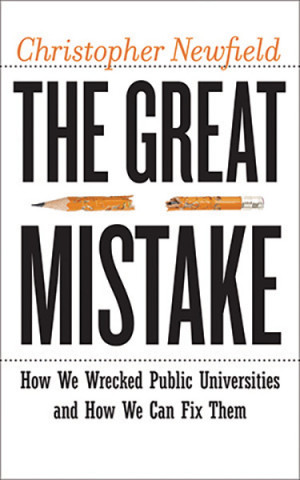In an effort to have the same health care benefits next year as the rest of the University of California system, UC Santa Barbara faculty groups have maintained pressure on the Office of the President personnel who developed the new plan. It now appears that UCOP is sending three senior officials to an otherwise routine open enrollment information meeting at the UCSB campus.
The Open Enrollment Fair runs from 9:30 am to 3:00 pm on Thursday, November 7, in Corwin Pavillion. In the same space, there will be two 90 minute Town Halls at 10:00 am and again at 1:00 pm.
The HR flyer describes these as "your opportunity to hear from UCOP leaders about why changes are being made." UCSB Faculty Association President Nelson Lichtenstein describes it as your opportunity to hear senior leaders "defending UCOP's decision to offer the UCSB community but an inferior and more costly insurance plan." Scheduled to appear in these roles are Peter J. Taylor, Vice President and Chief Financial Officer; John Stobo, Senior Vice President, Health Sciences and Services; and Nathan Brostrom, Executive vice President, Business Operations.
Both the UCSB FA and the UCSB Senate sponsored petitions objecting to the campus's unequal treatment, and these collected enough signatures to prompt this highly unusual simultaneous visit of three top officials to the Santa Barbara campus. Senate Divisional Chair Kum-Kum Bhavnani reportered 853 signatures on her petition prior to submission to UCOP, where her cover letter to Mr. Bostrom et al. concluded, "I know you are aware of the gravity of this issue and it is now evident that the campus faculty and staff are deeply disturbed that the new health plan is not living up to the fundamental principles of access for all and broad coverage."
For those coming in late, the basic issue is that for 2014 UCOP has dropped two Anthem health insurance plans and replaced them with an in-house system called UC Care, in partnership with Blue Shield. But Santa Barbara's only hospital, Cottage, and only large medical clinic, Sansum, are unwilling to offer Tier 1 coverage at the price UCOP has been willing to pay. Tier 1 means paying a copay rather than 20% for covered medical treatment: the latter is Tier 2, and is available at those facilities, as are the continuing HMO plans. For additional detail, see our posts "Health Care Troubles and a Simple Solution" (October 9), "The Plot Thickens on UC Care in Santa Barbara" (October 10), "Some Further Questions about UC Care" (October 12), "More on UC Care" (October 15), and links to additional coverage on our Employee Benefits page. The latter two posts are by faculty from UCLA and UC Berkeley, and UC Care's quality as an employee benefit is a systemwide as well as a UCSB issue.
I objected in "The Plot Thickens" to the UCOP position that by asking for Tier 1 at high-cost Cottage Hospital, UCSB employees were demanding a subsidy from the rest of the system. This is wrong both because UCSB is a net donor to the UC system's budget and because cost mutualization is the purpose of insurance pools and extra costs in this or that group are constitutive. In their response to Senate Chair Bhavnani and the Senate petition, VPs Bostrom, Stobo, and Taylor stick with their framework. They maintain that UC Care is a good deal for UCSB employees even without Tier 1. They also say that they will "continue to do all we can to include" Santa Barbara's Tier 1 providers in UC Care, "short of causing a premium increase for all other UC employees." Given the apparent difference between Cottage hospital and UCOP/ Blue Shield, this suggests UCOP remains unwilling to change their cost position to get a deal.
I still think UCOP / Blue Shield can and should come to an agreement with both Cottage and Samsum. There's help from the principle of equal coverage within an insurance pool. There's all the work and good will of campus people who've been trying to fix this for a couple of months. There's help from a common desire to avoid existential questions about the UC system (does UCOP believe in UC as a whole or doesn't it? is UCSB like some other smaller campuses going to be structurally disadvantaged now and forever? If so, what is the payoff of keeping the system as it is?, etc.)
Instead of going there, perhaps we could do the math and find a cost point somewhere in the middle. I hope Messieurs Bostrom, Stobo, and Taylor are asked and answer concrete questions about the size of the gap between the parties, the real costs of filling the gap, and whether an immediate patch can be found, before open enrollment closes, while final or out-year negotiations continue.
It seems from Peter Taylor's previous statement that the difference between the UCOP/Blue Shield position and Cottage's is about $825 a month per employee for the employer contribution. Could UCOP pay $715 more, or $413 more per month more to get UC Care Tier 1 going in its inaugural year and make the equity issue go away? Contributions could be revisited next year and in later years after the system has settled down and everyone has a chance to identify the real costs.
Given the larger questions involved, I don't think that would be so expensive after all.
Glad to hear there's extra money around
4 hours ago





2 comments:
You're absolutely right, Chris. Peter Taylor said today, "Cottage wouldn't budge an inch; they blew us off." But the unsaid is that UC won't budge either by perhaps agreeing to pay a little more per enrolled Santa Barbara employee as you suggest because of Cottage's monopoly which no one can change.
Instead, as Kum Kum and others pointed out, these UCOP administrators expect Santa Barbara UC workers to pay $3,000-$7,000 per year in order to have access to adequate doctors and specialists here or while doing our job outside Santa Barbara.
Either you provide equal health care opportunities for ALL your employees or you give up the pretense of a systemwide UCOP that's paying these administrators huge salaries to arrange adequate health care for everyone. THIS IS THEIR JOB! We should not have to be spending hours away from our work trying to figure out how we'll manage to stay healthy without an effective pay cut next year.
Did anyone ask Taylor about the $100 million cost overrun for UC Path?
Join the Conversation
Note: Firefox is occasionally incompatible with our comments section. We apologize for the inconvenience.